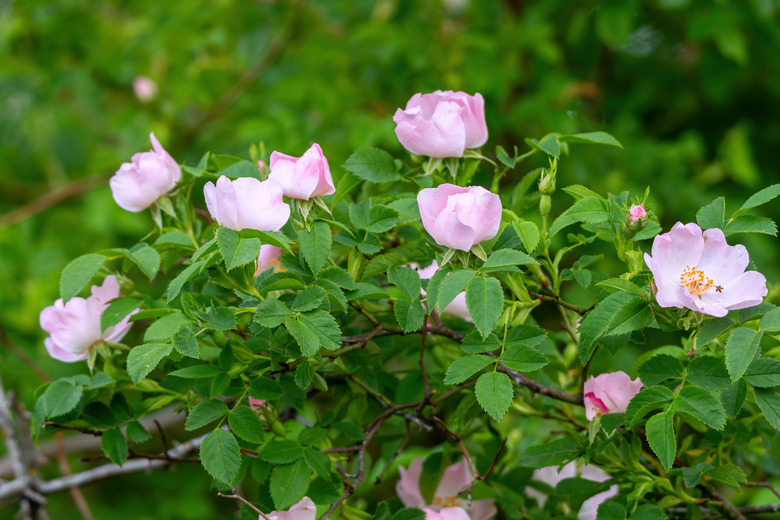How To Transplant Wild Rose Bushes
We may receive a commission on purchases made from links.
Wild roses (Rosa spp.) make a wonderful addition to any garden. If you are fortunate enough to come across one or more native species, you can easily transplant wild rose bushes to your own garden to add beauty and uniqueness. With the right know-how and the proper tools, you can add this thriving plant to just about any setting in U.S. Department of Agriculture plant hardiness zones 3 through 9 or 10 depending on the species.
Things Needed
-
Humus, compost or other organic material
How to Transplant Wild Rose Bushes
1. Find a Wild Rose
Find the plant you prefer. If you have a choice of multiple wild roses, look for one that is particularly healthy. Make sure you choose a plant that is the right size for your garden as well.
2. Ask for Permission
Ask before digging up the wild rose. If you find a rose on land that you do not own, make sure you get permission to transplant it. Disturbing wild plants is against in the law in many state parks and forests, and private land owners may not want wild or naturalized non-native roses to be disturbed or removed.
3. Wait Until Winter or Early Spring
Wait until the dormant season to transplant. Roses are best transplanted in their dormant season, sometime from November through February. You can try to transplant them during other parts of the year, but the dormant season gives the best results.
4. Prepare Your Tools
Sanitize your digging and cutting tools by dipping the metal blades in rubbing alcohol. You can also dip a rag in the sterilizing solution and wipe the blades as you work. Put on thorn-proof gloves, safety goggles, long sleeves, long pants and closed-toe shoes before you begin. Gauntlet gardening gloves, which extend to the elbow, are perfect for working with roses.
5. Prune the Rose
Prune the dormant wild rose before moving it. Trim the plant back to a few 12-inch-tall primary canes. Remove broken, crossing and dead twigs and stems.
6. Dig Up the Wild Rose
Dig up the plant. Dig as deeply as you can to get as much of the long taproot as possible. Depending on the age of the plant, you may not be able to dig out the entire root. So long as you get most of the root, the plant should not suffer any damage if the root is cut. Wild roses also have numerous smaller roots. These can be trimmed if necessary.
7. Prepare to Transport the Rose
Transfer the plant to a large piece of plastic, a tarp or container with drainage holes. Dig up some of the surrounding soil as well, and place it into the plastic or pot. This will help the rose acclimate to its new home.
8. Dig a Planting Hole
Dig a hole in your garden to accommodate the new rose. Dig deeply and incorporate some of the original soil into the planting site. This is very important for the rose's growth in the new growing season.
9. Transplant the Wild Rose Bush
Gently place the rose into the hole, and backfill. Water the rose in well as this will help the transplant thrive. Add a mound of mulch around the base of the rose, pulling it back 6 inches from the stem, and wait until the spring for new growth.
10. Water Daily for Two Weeks
Water daily for the first two weeks and then as needed during dry spells. If there's no rain for several weeks, check the soil. If it is dry to a depth of 2 to 3 inches, water the rose. Do not overwater and drown the roots; keep the soil lightly moist.
11. Fertilize When New Growth Appears
Fertilize with a rose fertilizer or several shovelfuls of well-decomposed compost after new growth appears. Use a slow-release fertilizer every few months or a liquid fertilizer biweekly or according to the package directions. Always water before and after applying fertilizer to protect the plant's roots.
